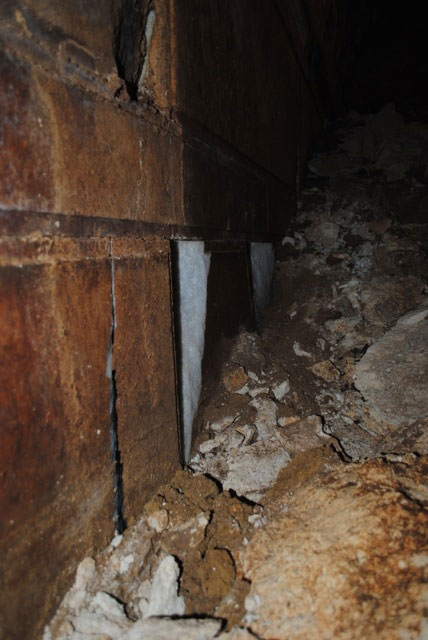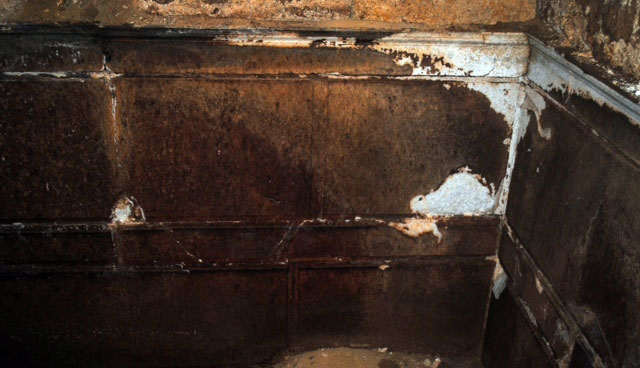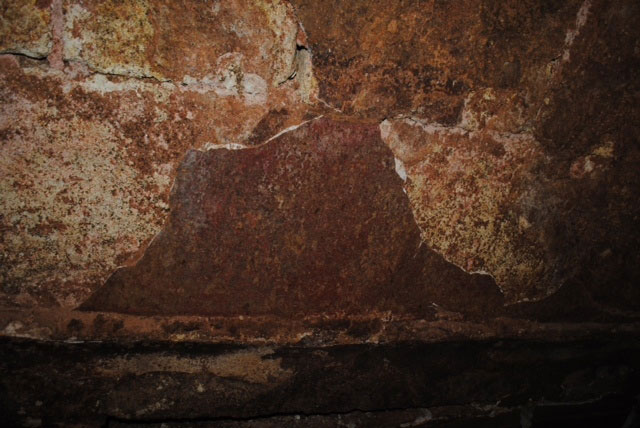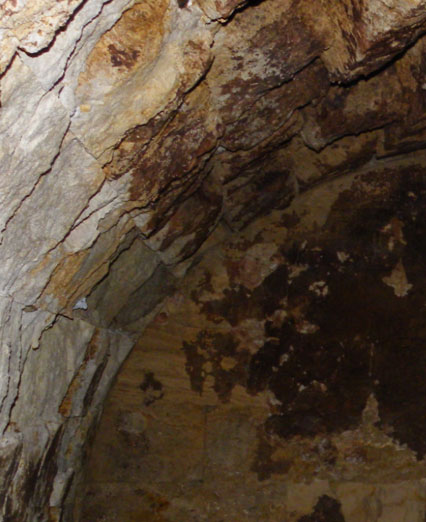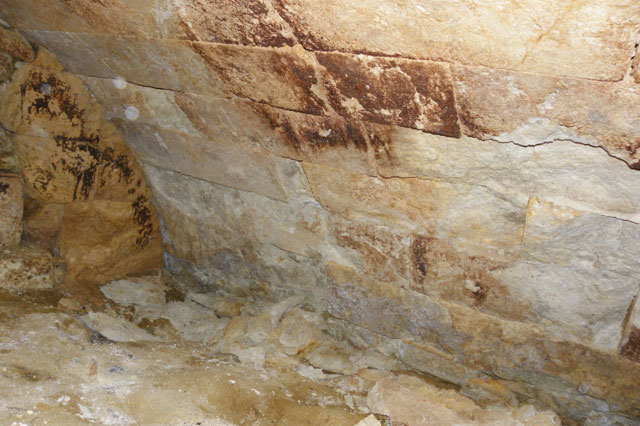 The excavation team entered the third chamber of the burial monument on the hill of Kastas last Friday, from the existing hole in the wall of the third aperture, to document its state and to determine the structural conditios of the chamber in order to design the necessary steps to retain and support the structure.
The excavation team entered the third chamber of the burial monument on the hill of Kastas last Friday, from the existing hole in the wall of the third aperture, to document its state and to determine the structural conditios of the chamber in order to design the necessary steps to retain and support the structure.
According to the announcement of the greek Ministry of Culture, entering the third chamber revealed the following data:
The height of the sandy soil is lower than the previous two chambers. On the sandy soils they found natural sediments with fossils of shells, from the natural terrain of the hill castes.
According to geological observations it appears that the embankment remains undisturbed.
Internally, the dome is made of limestone, just like the two previous chambers.
The three vertical walls, east west and north part of the visible walls, repeat the same pattern of marble coating, as in the previous two chambers, with pillars, crowned and Ionic architrave.
In the south wall – the visible part – at the right and left door frames, the marble coating continues. The overlying limestone is covered with a coat of red paint, which has forfeited the inner portion of the lintel.
The dome chamber seems to be in a state of equilibrium limit, the voussoirs in the crest exhibit opening joints, in a sufficient depth from the inner surface.
In almost all of the observed cracks of the domes and in extensive areas on either side of the crest we have significant losses of the material mass.
The marble pillars and the visible portion of the vertical wall pieces have systematic detachments which were detected on the surface of the backfill, photographed, numbered and collected.
